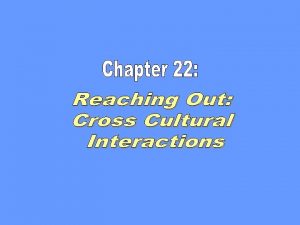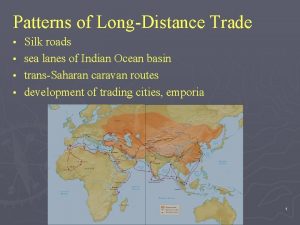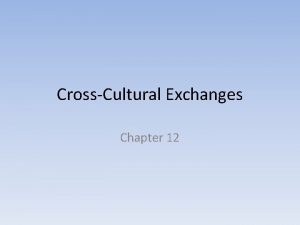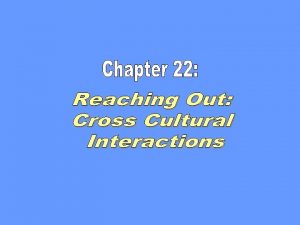LongDistance Trade One of the first longdistance trade







- Slides: 7


Long-Distance Trade One of the first long-distance trade took place between Egypt and Meso. Mostly luxury goods: spices, metals, textiles Egypt also began trade with Nubia (Eastern Africa—see map ), as Nubia then adopted Egyptian architecture (pyramids), dress, and religious deities (culture) By 2300 BCE, Mesopotamia was also trading by sea with the Indus Valley, as Indus ships arrived to Meso. with spices and other goods to trade Indus traders and translators settled in Meso, and intermarried Between the three areas, goods, culture, and religion were able to spread


Ancient Religions Most religions were polytheistic (many gods) in the Foundational Era, and often reflected human personalities and the environment Example, many gods were jealous, angry, lustful, unstable, and unpredictable, just like human beings and their environments (floods, famine, etc. ) Animism – some ancient religions worshiped inanimate objects (volcanoes, the sun, etc. ), and made sacrifices or rituals in their honor Shamanism – some tribes had a shaman who could ‘connect’ with the spirit world, heal, and have visions Ancestral veneration – in East Asia (modern-day China, Japan, and Korea), families honored and prayed to ancestors for protection, and erected shrines to honor them Example: Mulan!

Major Migrations Around 1800 BCE, chariot-riding, iron-wielding Caucasian (Indo-Europeans) began to migrate and conquer vast regions of Europe, the Middle East, and India This migration and conquest wiped out many ancient cities and civilizations, replacing them with modern-day Persians, Celts, Germans, Greeks, and Indians They also were responsible for the spread of their religions and the Indo-European language (the largest language branch in the world) Additionally in Africa, the Bantu people began to migrate from Western to Eastern and Southern Africa Along their way, they brought with them iron-making skills, their Bantu language, and Bantu agricultural techniques / civilization

Aryan Migration (chariot driven) – 1800 BCE - Spread of Indo-European Language

Bantu Migration – 1000 BCE












